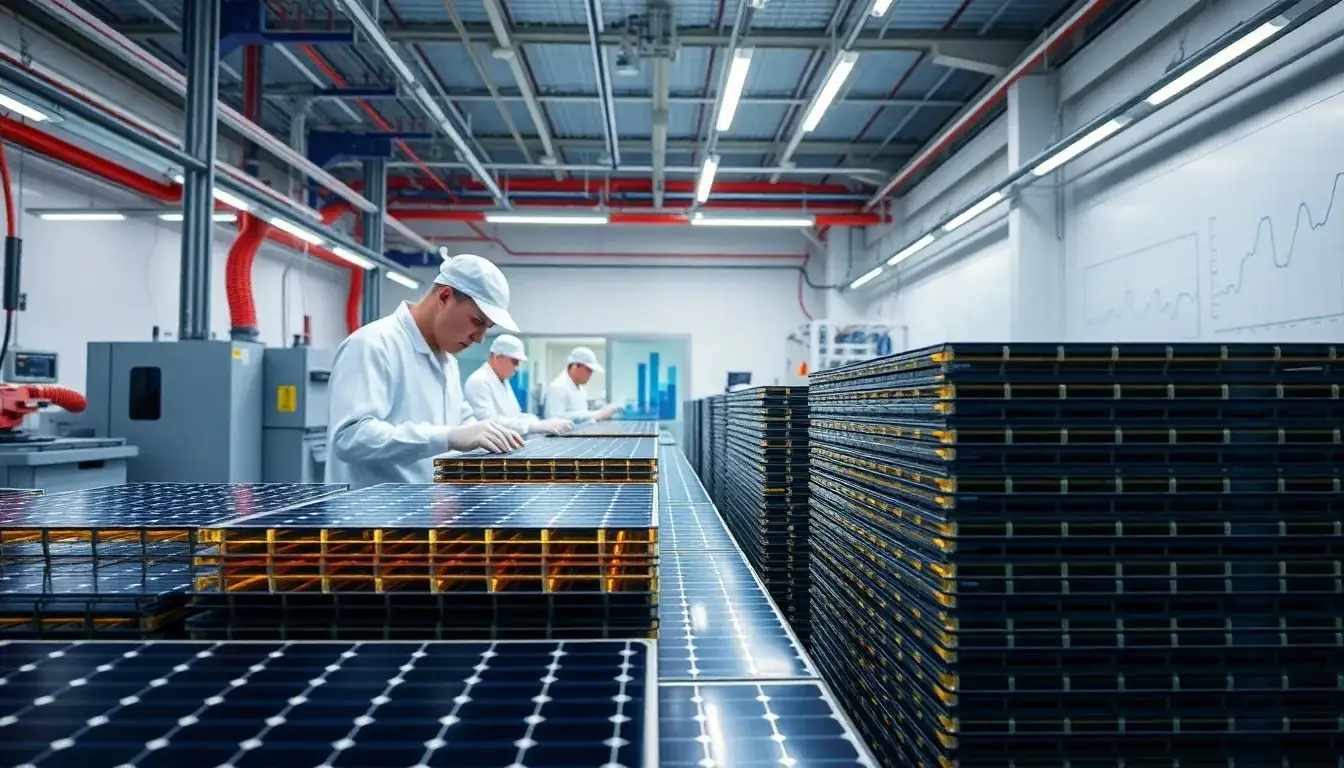
Hangzhou Kolin Plans Major Expansion of Perovskite Solar Cell Production, Aiming to Raise Up to 1.46 Billion Yuan
On March 17, Hangzhou Kolin announced its plans for a significant expansion in the production of perovskite solar cell modules. The company disclosed its proposal for a private placement of A-shares, with plans to raise up to 1.46 billion yuan by issuing shares to specific investors.
The funds raised will be utilized, after deducting issuance costs, for a 1GW high-efficiency perovskite solar cell module project and to supplement the company’s working capital. The issuance is aligned with the company’s core business and does not involve any restructuring of existing operations or assets, nor will it alter the primary business focus.
A representative from Hangzhou Kolin’s board stated, “Currently, the company has already initiated production of perovskite solar cell modules, achieving commercial viability. Our existing production capacity is limited to 100MW for the perovskite pilot line. Given the current status of our products, we plan to use the funds from this placement to expand our production capacity.”
Additionally, a senior executive from a photovoltaic equipment company in North China noted that while there are many demonstration projects in the perovskite solar sector, the industry has yet to reach a stage of large-scale commercialization and remains in the early phases of market development.
Hangzhou Kolin emphasized the critical period of commercialization for perovskite cells. “At present, the cost per watt of our 100MW perovskite photovoltaic modules is relatively high. To meet the potential demand for widespread applications in downstream markets, we need to lower costs and enhance efficiency through mass production for broader adoption,” the company stated.
In November 2024, Hangzhou Kolin began production on its large-area, 100MW perovskite module production line, managed by its subsidiary, Hangzhou Kenen New Energy Co., Ltd. Established in September 2023, Kenen New Energy focuses on the research, development, and industrialization of third-generation photovoltaic modules.
Hangzhou Kolin has introduced a series of stacked and single-junction perovskite photovoltaic modules, primarily targeted for applications in Building-Integrated Photovoltaics (BIPV), rooftops, and facades. The company is also committed to developing smart sensing and diagnostic warning devices for electrical equipment, along with electrochemical energy storage systems, covering numerous series in the transmission, transformation, and distribution sectors across high, ultra-high, and extra-high voltage.
Regarding the synergy between its perovskite photovoltaic initiatives and its core business, Hangzhou Kolin explained that its development direction aligns with the new power system encompassing “source, grid, load, and storage.” This strategy aims to create a product line covering the entire link from generation, transmission, transformation to distribution, further extending and refining the company’s industrial chain, enhancing business scale, and improving operational performance.
In its performance report, Hangzhou Kolin indicated that in 2024, it achieved a revenue of 541 million yuan, reflecting an annual increase of 168.23%, while net profit attributable to shareholders reached 73.01 million yuan, up by 54.67%. The revenue growth was primarily attributed to the expansion of its energy storage business and the development of markets outside the province.
Many industry insiders believe that as the perovskite photovoltaic sector accelerates its industrialization, competition in this field will intensify by 2025. The aforementioned executive from the photovoltaic equipment company analyzed that this year might see the elimination of outdated capacity in the traditional photovoltaic sector, increasing survival pressures on many second- and third-tier photovoltaic companies, while some leading firms continue to face liquidity challenges.
The photovoltaic industry is transitioning from a phase of “capacity competition” to “product competition,” pushing companies along the supply chain to identify new growth opportunities, with perovskite photovoltaic business emerging as a new market choice. According to third-party market data, over 6,000 organizations and more than 100 countries are engaged in research and development related to perovskite photovoltaic technologies, including companies like Jinchen Technology, Xianan Photovoltaics, and CATL.
Furthermore, projections suggest that by 2030, China’s annual production capacity for perovskite batteries could reach 161GW. A representative from Hangzhou Kolin highlighted that the primary materials for perovskite solar cell modules, such as organic molecules, have a cost that is approximately half that of crystalline silicon modules. Additionally, the foundational formulations for perovskite materials are largely derived from in-house research, providing a stronger capability for self-production.
In light of the fierce market competition and concerns regarding overcapacity, Hangzhou Kolin emphasized that the market for perovskite solar cell modules differs from that of traditional photovoltaic sectors. On one hand, the perovskite photovoltaic market is sufficiently large to accommodate more companies; on the other hand, the application areas for perovskite solar cell products are diverse, extending beyond traditional centralized distribution to sectors like consumer electronics, allowing companies to pursue differentiated niche markets.
“Based on current research progress, perovskite photovoltaic cells have the potential to become one of the key development directions for the future photovoltaic industry. However, it is important to note that perovskite photovoltaic technology is still in the early stages of large-scale industrialization, facing challenges in stability, large-area fabrication, cycle life, process consistency, and cost. Further research and industrialization efforts are essential,” stated the aforementioned executive from the North China photovoltaic equipment company. The industry is currently ramping up basic research to enhance the performance and stability of perovskite photovoltaic cells, entering a crucial phase of technological development that will require time to mature.







